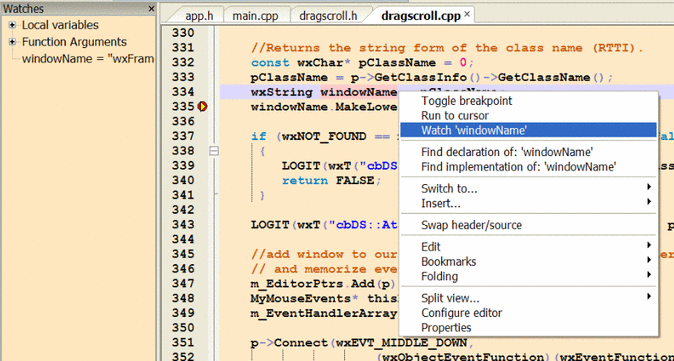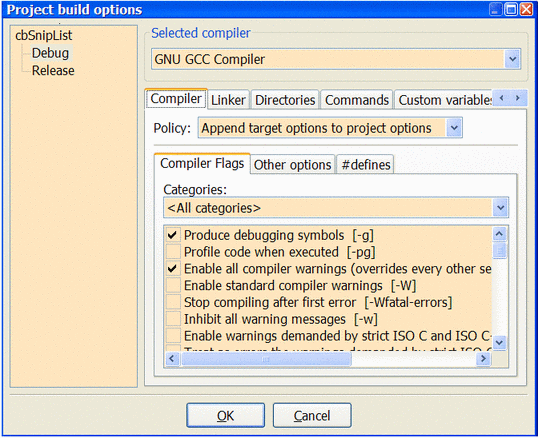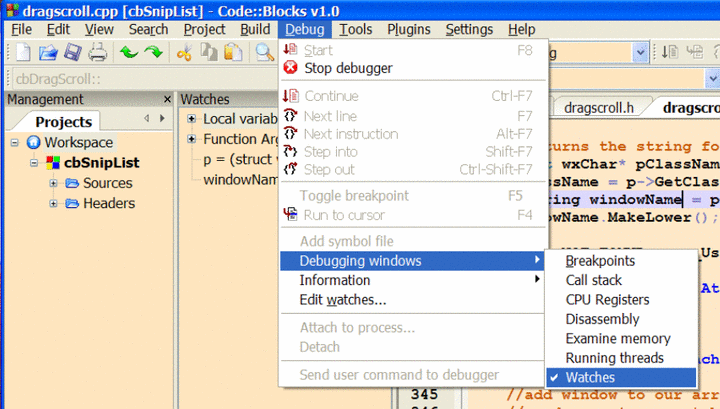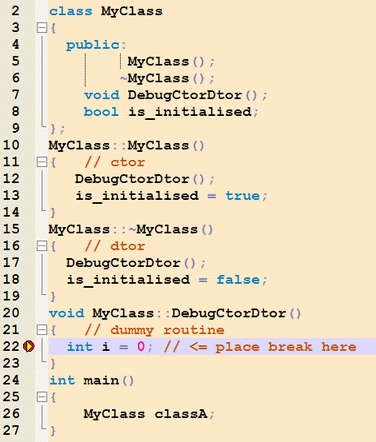Debugging with Code::Blocks
Make sure that the project is compiled with the -g (debugging symbols) compiler option on, and the -s (strip symbols) option off. This ensures that the executable has debug symbols included.
Compiler optimization switches should be turned off, stripping symbols (-s) must be turned off.
Keep in mind that you may have to re-build your project as up-to-date object files might not be re-compiled with -g otherwise. Please be aware that in compilers other than GCC, -g might be a different switch.
Menu => Project => Build Options
Open The Debugger Watches Window
Find the line containing the variable to be watched. Set a breakpoint in a position that will allow you to observe the variable value.
Menu => Debug => Toggle Breakpoint

Run the debugger until the breakpoint is reached. Right click the variable to set a watch in the Watch Window.
Notes:
Breakpoints may also be toggled with a left click in the left editor margin.
Breakpoints do not work in constructors or destructors. They do, however, work in routines called from them. This is a GDB restriction, not a bug. So you could do something like:
...and place a breakpoint in "DebugCtorDtor" at the line "int i = 0;" . The debugger will break at that line. If you then step the debugger (Menu Debug => Next Line; or alternatively F7) you'll reach the code in the contructor/destructor ("is_initialised = true/false;").
The list of watches can be saved to a file and later re-loaded. To do so, right click in the list of watches and select "save watch file" (and "load watch file" to re-load them again).


